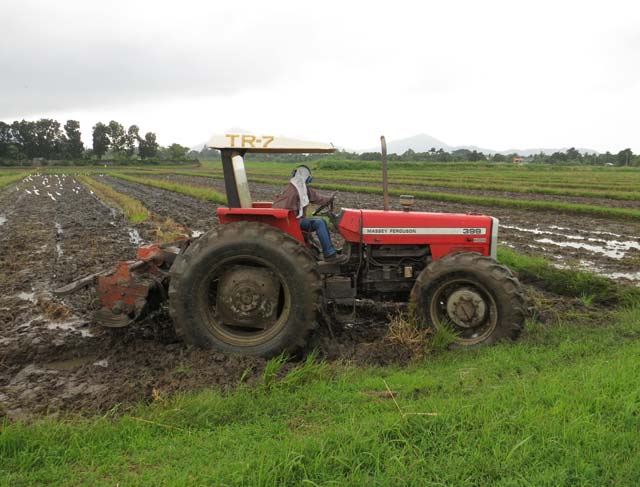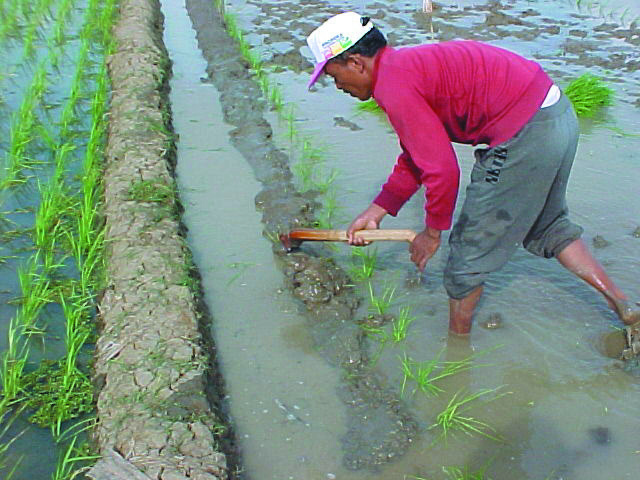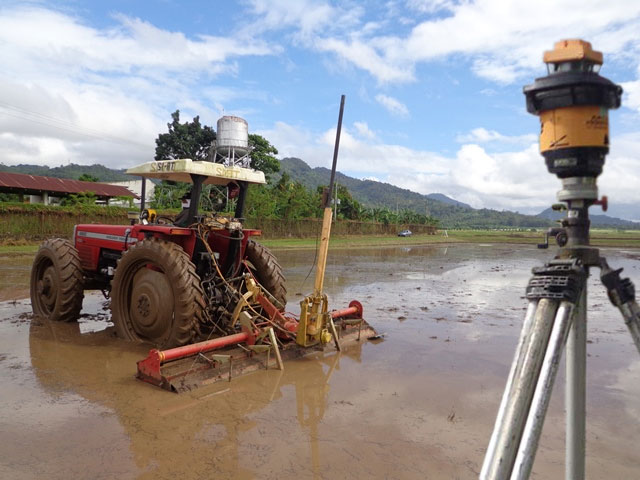 Perform primary tillage operations
Perform primary tillage operations
 Primary tillage is normally undertaken when the soil is wet enough to allow the field to be plowed and strong enough to give reasonable levels of traction. This can be immediately after harvest or at the beginning of the next season, depending on soil moisture and water availability.
Primary tillage is normally undertaken when the soil is wet enough to allow the field to be plowed and strong enough to give reasonable levels of traction. This can be immediately after harvest or at the beginning of the next season, depending on soil moisture and water availability.
- Plow the field.
Implement options:
Power: 4-wheel tractor / 2-wheel tractor / animal power
Attachments: moldboard plow / disc plow / rotavator
Make the first pass along the edges of the field in a clockwise pattern. For the second pass, move counterclockwise and finish at the center.
Read: What are the different plowing patterns? (Training resource)
The soil should be plowed to attain a reasonable depth (10−20 cm of cultivated soil) with varying clod sizes, and to kill weeds by burying or exposing the roots.
Depending on the clod size, another tillage operation can be done using primary tillage implements. Additional primary tillage operations are generally done with disc plow or rotavator.
What is rotary tilling?
Primary tillage may also be done through rotary tilling. A power tiller or tractor-mounted rotary tiller is used in this operation.
Tiller blades or knives completely cut and mix the soil. They also break up and shred plant stubble or weeds, speeding up the decay of plant materials.
Rotary tilling can be done during primary and/or secondary tillage of soil.

 Wet preparation is the most common way of preparing lowland fields. In this method, the soil is tilled in a saturated or flooded condition.
Wet preparation is the most common way of preparing lowland fields. In this method, the soil is tilled in a saturated or flooded condition.
 Depending on climate and soil type, this should be done 10−14 days after primary workings.
Depending on climate and soil type, this should be done 10−14 days after primary workings.









